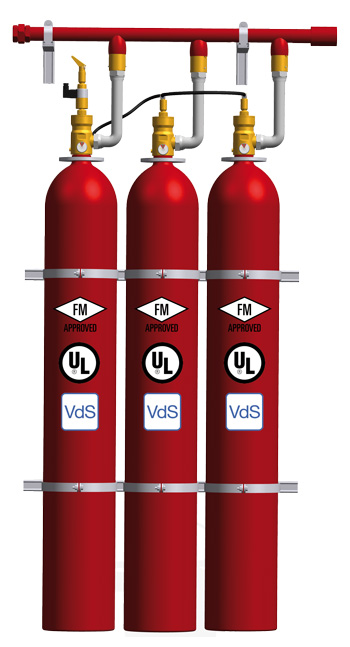GAS BASED SUPPRESSION

Gaseous fire suppression, also called clean agent fire suppression, is a term to describe the use of inert gases and chemical agents to extinguish a fire. These agents are governed by the National Fire Protection Association (NFPA) Standard for Clean Agent Fire Extinguishing Systems – NFPA 2001 in the US, with different standards and regulations elsewhere. The system typically consists of the agent, agent storage containers, agent release valves, fire detectors, fire detection system (wiring control panel, actuation signaling), agent delivery piping, and agent dispersion nozzles. Less typically, the agent may be delivered by means of solid propellant gas generators that produce either inert or chemically active gas.
CLEAN AGENTS: The SIEX-HC™ clean agent systems offer the highest efficiency for the most diverse hazard areas. All components, from the cylinder banks to the nozzles, are developed to the highest quality assurance standards. Halocarbon gases works by TOTAL FLOODING, with discharges occurring within a few seconds.
It functions primarily through the instantaneous decrease in temperature of the protected room. The drastic removal of heat causes radical fire suppression.
INERT AGENTS: INERT-SIEX™ clean agent systems are made up of gases found in the atmosphere and are therefore completely environmentally friendly. They work by completely flooding the room, reducing the oxygen content necessary for combustion, but at the same time ensuring adequate oxygen concentrations for use in occupied areas.
They can work at pressures up to 300 bar (4350psi), providing savings in the installation cost. We also have 200 bar (2900psi) systems, depending on the volume / concentration needs. Thanks to the use of calibrated restrictors which reduce the pressure, conventional schedule pipes can be used. This system is specifically designed for installations with longer distance pipe runs.

